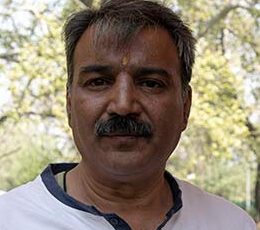 Satish Mahaldar
Satish Mahaldar
On 17th October 2024, Kartika Maasa began. Known as the month of Damodar, Kartika Masa holds special significance as Lord Vishnu accords it the highest esteem. During this period, any good deeds performed are fully accepted by all the Devas, who are especially receptive throughout the month. Devotees engage in rituals such as Snaan (bathing), Daan (donation), Bhojan (feast), Vrath (fasting), and offerings of Til (sesame seeds), Dhenu (cows), Suvarna (gold), Rajat (silver), Bhumi (land), and Vastra (clothing). Additional practices include Tapasya (austerity), Japa (chanting), Homa (sacred fire ritual), Yagna (sacrifice), Annadaan (food donation), and puja with Tulasi leaves. Devotees also perform Abhishek on Vishnu’s idol with water from the Ganges and other holy rivers, as well as Panchamrit (a mixture of milk, ghee, curd, honey, and sugar). Worship involves Shodasopacharas to the deities, recitation of Vedic texts, listening to Puranas, singing bhajans, offering stutis to deities, temple visits, and fasting.
Lord Brahma decreed that the fortnight from Kartika Krishna Trayodasi to the end of the month—starting from Deepavali on the Amavasya of Aswayuja—should be celebrated as festival days. The Pradosha time on this Trayodasi is particularly auspicious, as it’s dedicated to the worship of Lord Yama. Lighting Deepas at the main entrance and offering Naivedya during this time ensures protection from Apamrityu or untimely death. Worshippers recite the following mantra: Mrityuna pasha dandaabhyaam Kaalena cha maya saha, Trayodashyam Deepa daanaath Suryajah Preeyathamiti, which translates to “With this Deepa daan on Trayodashi, may Surya’s son, Yama, be pleased, safeguarding us from death, Yama’s rope, his staff, and the influence of time.”
On the morning of Kartika Amavasya, devotees perform puja for the deities, and at Pradosha time that evening, strings of Deepas are lit in honor of Devi Lakshmi. The invocation goes: “Devi Lakshmi! We welcome You with the Deepa Jyoti (the splendor of these lamps) as You symbolize boundless illumination. You embody Surya, Chandra, Agni, and gold (prosperity); please make our home Your residence!” Thus, Kartika Krishna Paksha becomes a highly auspicious time, invoking good health from Yama Raja and wealth from Devi Lakshmi, bringing joy and prosperity.
Devotees who chant Om Namo Narayanaya, recite or listen to the Vishnu Sahasranam, and read or hear the Gajendra Moksha Paatha throughout the month—or even for five nights—gain freedom from want, disease, adversity, and discontent. The observance of Kartika Ekadashi, in particular, ensures satisfaction in this life (Iham) and bliss in the afterlife (Param), with each virtuous act on this day bringing multiplied blessings.
In the Nilamata Purana, Abhinavagupta composed the Vartika to the opening verse of Malini Vijaya. It describes the consecration of the Sharika or Chakreshwari idol at the Sri Chakra site, from which Sri Nagar (the Place of Sri Chakra) derived its name. The Sri Chakra, symbolizing Shakti, is depicted as a complex diagram with a central point (Bindu), encircled by three rings, with four gates, forty-three triangles, and lotus petals, all resonating from the core. It includes six triangles representing the Shat-Dal (Six Forms/Goddesses: Saraswati, Lakshmi, Gauri, Ashtadashbujaye, Ashtabujaye, Dashannanaye) and eighteen angles symbolizing the eighteen arms (Ashtadash Bujas) of Devi.
In verses 1051-53, the Nilamata Purana lists various deities, including Chakreshwari. It states, “By a sight of goddess Bhima, one obtains great wealth, and by seeing goddess Kapinjali, one gains prosperity from the goddess Suresvari… viewing goddesses like Bhadresvari, Gautamesi, and Chakreshwari, one’s desires are fulfilled.” This Chakreshwari refers to Vishnu’s consort in her Vaishnavite form as Sri or Lakshmi. Verse 1054 refers to Chakrasvami (likely Vishnu) and mentions that seeing the goddess seated with Hara brings liberation from sin and honor in Rudra’s domain. Kalhan, in his Rajatarangini (Verse 354, Book 1), also refers to Chakreshwari’s significance.
The Kashmiri text describes a festival called Deepamala, also known as Sukhasuptika, celebrated on the same lunar date as modern Diwali. According to the Nilamata Purana, on Kartika Amavasya night, devotees are to worship Goddess Lakshmi by placing earthen lamps outside their homes and at locations frequently visited. After the prayer rituals, it’s traditional to gather with family and friends for a meal. The earthen lamps should be immersed (visarjan) the day after Kartika Purnima.
The writer Satish Mahaldar is a prominent metaphysical philosopher and can be reached at mgmt@jkpeaceforum.in

